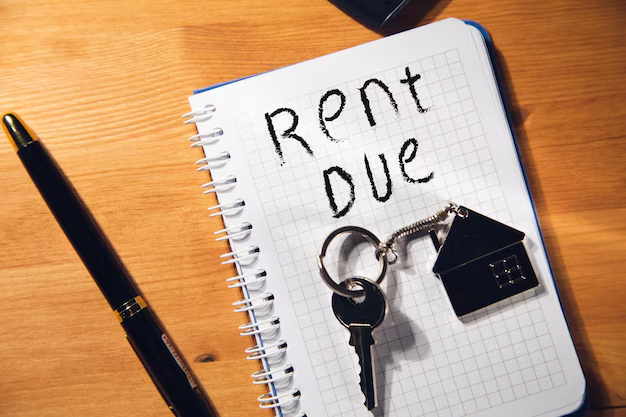Choosing the Right Mortgage Term: What It Means for Your Monthly Payment and Total Interest
When purchasing a home, one of the most critical decisions you'll face is selecting the right mortgage term. It’s a decision that can impact both your monthly payments and the total interest you'll pay over the life of your loan. Understanding this impact will help you make an informed choice that aligns with your financial goals. In this guide, we'll break down how different mortgage term lengths affect your financial responsibilities and explore insights to help you navigate your options confidently.
🏠 Mortgage Basics: Terms, Payments, and Interest
Before diving into the specifics of term lengths, let's establish the fundamentals.
Understanding Mortgage Terms
A mortgage term is the length of time you agree to pay off your home loan. Common mortgage terms are 15, 20, and 30 years, each offering distinct advantages and trade-offs. Choosing the right term can be as crucial as selecting the property itself.
The Relationship Between Term Length and Monthly Payments
Shorter Terms (15-20 years): These typically mean higher monthly payments because you are paying off the principal faster. However, they often come with lower interest rates and less total interest paid over the life of the loan.
Longer Terms (30 years or more): Offer lower monthly payments, which can make it easier to manage monthly cash flow. However, they accrue more interest over time, increasing the total cost of the mortgage.
Interest and Its Impact
Interest is essentially the cost of borrowing money. The amount you pay in interest is determined by both the interest rate and the term length. A shorter term usually means less interest paid in total due to the quicker repayment period, while a longer term means more interest accrues over time.
📊 Analyzing Different Mortgage Terms
Let's take a closer look at how different mortgage terms impact your payments and total interest, providing a clearer picture of the financial implications.
15-Year vs. 30-Year Mortgages
15-Year Mortgage:
- Pros: Faster home equity accumulation, lower interest rates, less overall interest paid.
- Cons: Higher monthly payments can strain your budget.
30-Year Mortgage:
- Pros: Lower monthly payments improve affordability, more flexibility with cash flow.
- Cons: Higher interest rates, much more interest paid over the loan's duration.
Example Breakdown
Consider a hypothetical scenario with a $300,000 mortgage:
| Term Length | Interest Rate | Monthly Payment | Total Interest Paid |
|---|---|---|---|
| 15 Years | 3.2% | ~$2,095 | ~$76,146 |
| 30 Years | 3.8% | ~$1,395 | ~$200,165 |
From the table, it’s clear that while the monthly payments are higher for the 15-year term, the total interest paid is significantly lower.
Evaluating Intermediate Options: 20-Year Mortgages
A 20-year mortgage can be a compromise between the benefits and downsides of 15-year and 30-year terms. With moderate monthly payments and lower total interest compared to a 30-year term, it can be ideal for those seeking balance.
⚖️ Balancing Costs and Benefits
- Carefully evaluate your financial situation, future income prospects, and personal goals.
- Consider how quickly you want to build equity or if you're planning to invest savings elsewhere.
💡 Strategies for Choosing Your Ideal Mortgage Term
Selecting the perfect mortgage term involves more than just calculating payments; it’s about aligning with your long-term financial strategies.
Long-Term Planning for Your Financial Health
- Consider Your Stage in Life: Younger buyers may prefer the liquidity and lower payments of a 30-year mortgage, while established professionals might opt for a 15-year term to quickly build equity.
- Anticipate Career or Lifestyle Changes: Expecting a raise or a career shift? Factor such changes into your ability to manage payments.
Flexibility and Future Proofing
- Option for Early Payoff: Longer-term loans still allow you to pay extra towards the principal, effectively shortening your loan term and reducing interest.
- Refinancing Opportunities: Markets change; refinancing can let you adjust your rate and term to better suit current needs.
Evaluating Personal Priorities
- Decide how much you value immediate savings versus long-term cost.
- Assess how comfortable you are with higher monthly commitments for the sake of saving overall.
📌 Key Takeaways and Tips
Here’s a quick summary of essential points to consider when selecting your mortgage term:
- ⬆️ Higher Monthly Payments, Lower Total Interest: Choose a shorter term if you can afford high monthly payments and want to save on interest.
- ⬇️ Lower Monthly Payments, Higher Total Interest: Opt for a longer term if you need manageable payments and flexibility in your monthly budget.
- 🔄 Be Open to Adjustments: Consider options like refinancing or paying extra when feasible to potentially reduce overall costs.
- 🎯 Align with Your Goals: Match the mortgage term with your personal and financial objectives, future plans, and comfort level.
Making the right mortgage decision can save you money and stress in the long run. Owning a home is a significant financial milestone, and being informed about the impacts of term choices will ensure this commitment aligns with your future aspirations. By understanding how term lengths influence your financial journey, you can take deliberate steps toward achieving homeownership on your terms.

Related Topics
- A Beginners Guide To Investing In Gold And Other Precious Metals On a Budget
- A Comprehensive Guide To Bridge Loans: How They Can Be Helpful For Lower Income Americans
- A Comprehensive Guide: Growth Stocks Versus Value Stocks
- A Comprehensive Guide: The Impact Of Bankruptcy On Homeownership And Mortgage Options
- A Guide For Lower-Income Americans: Making Your Savings Last A Lifetime
- A Guide: Understanding Different Types Of Bank Accounts
- A Guided Journey: Applying For a Mortgage Through Your Bank
- A Helping Hand: Government Assistance Programs For First-Time Home Buyers
- A Practical Guide: Understanding And Reducing Your Property Tax Assessment
- A Simple Guide To Rent-to-Own Home Contracts For Lower-Income Americans